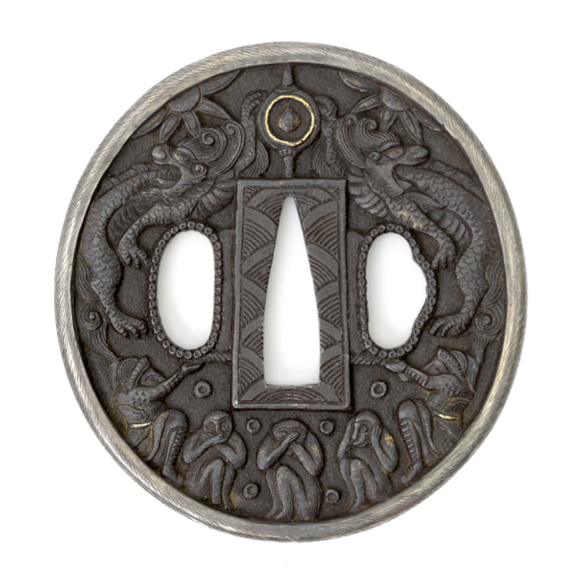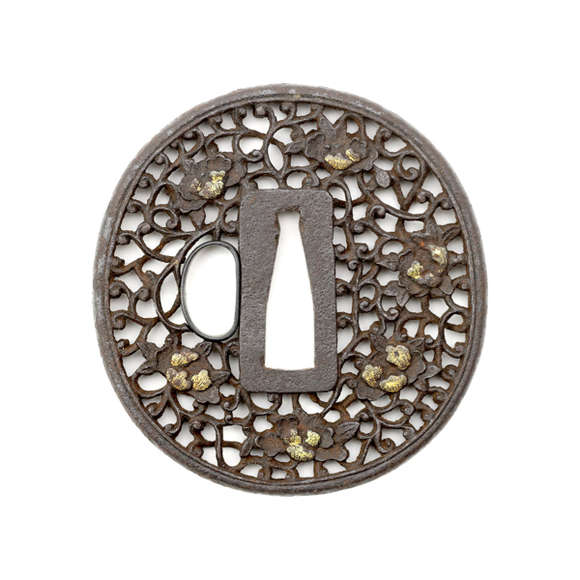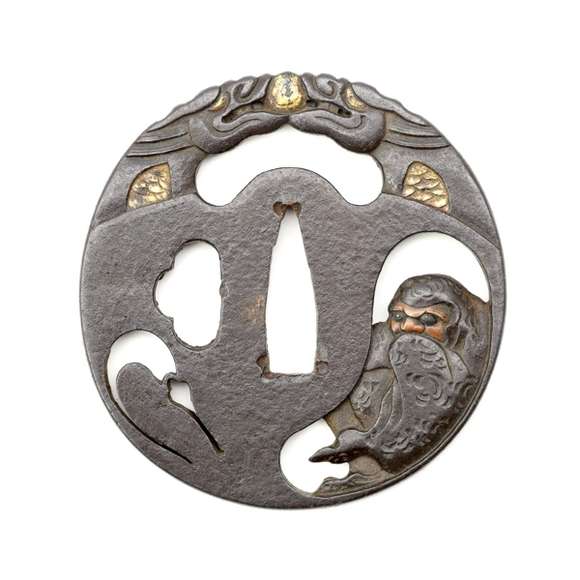Language: Japanese
Source: In common use
Description
Shin jūgomai kōbuse (真十五枚甲伏鍛え) can literally be translated as "true 15 folded kōbuse forging".
It is a construction method that is inscribed on some Japanese sword tangs, starting in the Kanbun period of 1661-1673 with the highly eccentric but influential Mito-master Ōmura Kaboku (大村加卜).1
Markus Sesko translates it as: "made in kōbuse technique by using 15-times folded steel". He believes shin can be interpreted as short for shingane (心鉄), indicating that it was this part of the sword that was 15-folded.2
Notes
1. See his remarkable life story at toryo-mon.com. Physician, ronin, jiu-jitsu master, student of Western medicine, a master swordsmith, and much more. His death was as unusual as his life. Also see Markus Sesko; Swordsmiths of Japan A-Z. Lulu Inc. 2015. (Available for purchase here.)
2. Markus Sesko; Encyclopedia of Japanese swords. Lulu Inc. 2014. Pages 399-400. (Available for purchase here.)
Construction
Kōbuse (甲伏せ) literally means "armor covered" in Japanese. It is used to describe a blade construction where an outer jacket of high-carbon steel called hagane (刃鉄) or "edge steel" is folded over a softer, lower carbon steel or iron core called shingane (心鉄), "core steel". For more information, see the glossary article: kōbuse.
The shin jūgomai kōbuse variation is described in detail in Ōmura Kaboku's book Kentō Hihō (剣刀秘宝). He uses two types of core steel; shin-jitetsu (心地鉄) “core base steel” and shin-hatetsu (心刃鉄) “core edge steel”. He would completely wrap this construction in a layer of skin steel that he called tsurabuse-uwatetsu (面伏上鉄) “lying over surface steel”.1
For the shin-hatetsu high-quality steel from Izuha and/or Shisō was used. The shin-jitetsu would be folded 15 times to soften it, hence the name.

Notes
1. Markus Sesko; Encyclopedia of Japanese swords. Lulu Inc. 2014. Pages 399-400. (Available for purchase here.)
Also see Sesko; Rare mentions of forging techniques in sword signatures. www.markussesko.com, 2013.
Occurrences on sword tangs
As said, the first to specifically inscribe it into his sword tangs was Mito-master Ōmura Kaboku (大村加卜), this was around the Kanbun period of 1661-1673. He either developed it himself, or emulated an old Kotō technique.
The phrase found on his nakago is:
真十五枚甲伏作
shin jūgomai kōbuse saku
"True 15 layer kōbuse made"
The tradition was continued down his line by, among others:
Bokuden (卜伝), student of Ōmura Kaboku. Active around Kanbun period of 1661-1673, died 1688.
Jō-saku rated.
Musashi Tarō Yasukuni (武蔵太郎安国), student of Ōmura Kaboku. Born 1650, died 1730. Famous for teaching Yoshiteru, who in turn taught Suishinshi Masahide.
Jō-saku rated.
Musashi Toshinaga (利長), student of Ōmura Kaboku and Musashi Tarō Yasukuni (武蔵太郎安国). Active around Jōkyō to Hōei period of 1684-1711.
Chū-saku rated.
Musashimaru Yoshiteru (武蔵丸吉英), student of Musashi Tarō Yasukuni Active around the Hōreki period of 1751-1764.
Chūjō-saku rated.
Suishinshi Masahide (水心子正秀). Student of Musashimaru Yoshiteru. Born 1750, died 1825. Grandmaster swordsmith, considered the founder of Shinshintō sword making, hailing in a revival of "golden age" Heian and Kamakura period styles of sword making.
Saijō-saku rated.
Hamabe Toshinori (寿格). Born 1746, died 1810. Learned the technique from Matsumura Masanao, who in turn learned it from Suishinshi Masahide.
Jō-saku rated.
Yoshihiro (吉広). Active around the Tenpō period of 1830-1844. No master is given, but probably learned it from Suishinshi Masahide or his circle.
No Fujishiro rating, but one of his blades is designated as an important cultural object of Aomori Prefecture.
Notes
The above smiths are all sourced from Markus Sesko; Swordsmiths of Japan A-Z. Lulu Inc. 2015. (Available for purchase here.)






